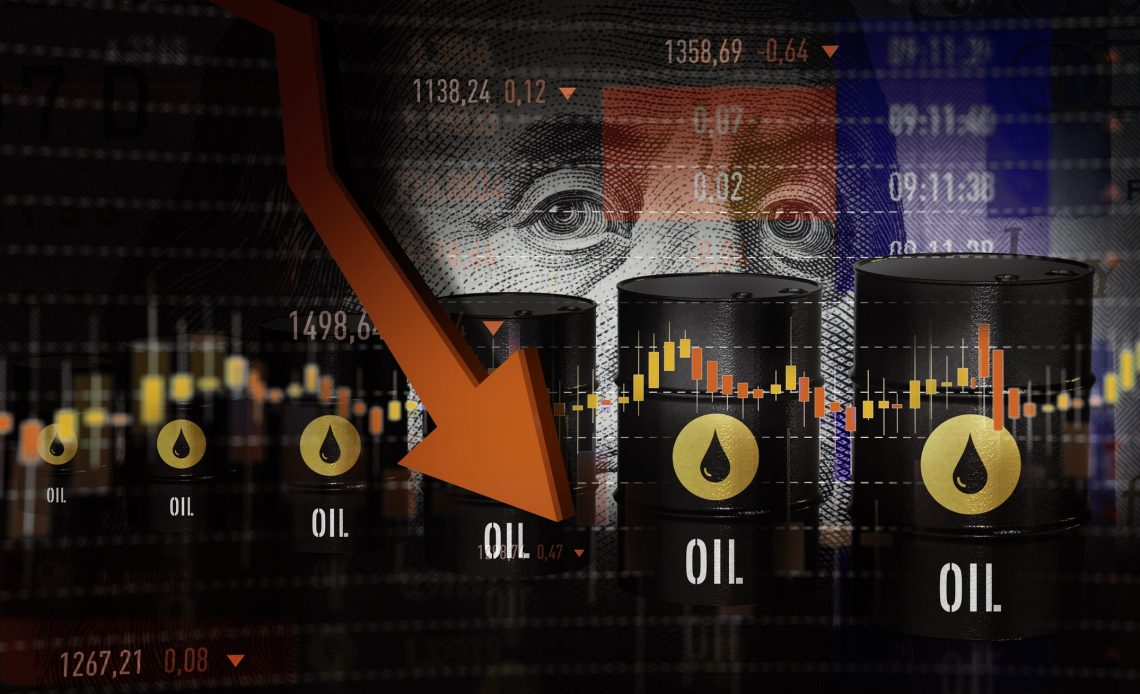Prices of benchmark United States crude turned negative on Monday, dropping as low as -$40.32 per barrel before settling in the negative thirties.
Why are oil prices crashing? And what does it mean to the average person? Why did US oil prices turn negative?
In a word – oversupply. Right now there is so much excess crude sloshing around the US and global markets that producers and traders are literally running out of places to store it – both on land in tanks, and even at sea on oil tankers. When prices turn negative, that signals that traders are willing to pay to have oil taken off their hands. I kept hearing about oil futures? What are those?
Oil trades as so-called “futures contracts” that allow buyers to purchase barrels of oil at a predetermined price for delivery at a predetermined future date. This is a binding agreement that legally requires buyers and sellers to make good on the deal when the contract comes due.
On Monday, the futures contract that obliged buyers to take possession of US benchmark West Texas Intermediate (WTI) crude in May was set to expire the next day. And because traders were worried about where they could possibly store the crude they were obliged to take possession of, they dumped the contracts, sending them into negative territory. Brutal. Will the same thing happen to WTI that’s set to be delivered in June?
Prices for WTI for June delivery were under pressure on Tuesday, but they hadn’t yet turned negative. But if storage remains an issue, the pressure is unlikely to ease up. Why is there such a massive glut of crude?
The world was already awash in crude going into this year. Then the coronavirus struck, ushering in containment measures that shut down businesses, closed borders, disrupted international travel and locked down consumers. Those disruptions decimated demand even more. And just when things couldn’t get any worse, Saudi Arabia declared an oil price war. What is an ‘oil price war’ and why did the Saudis declare one?
The Saudis, who are the de facto leaders of the OPEC oil price fixing cartel, wanted non-OPEC producer Russia to agree to deep production cuts to offset the coronavirus demand hit and buoy prices. When Russia refused to do as the Saudis wanted, Riyadh responded last month by lowering the price it charges for Saudi crude and pumping oil with abandon. That’s when prices really started to nosedive.
But doesn’t that hurt the Saudis too when prices nosedive?
For sure, but not as much as other producers. The Saudis can pump oil more cheaply than any other entity, which gives them a serious advantage if they want to steal market share from higher cost producers. But they can’t weather such low prices indefinitely. The kingdom needs to oil to fetch $83 a barrel to balance its budget. Which producers were hurt the most?
Any country that relies heavily on oil for the lion’s share of its income is getting clobbered right now. So are US shale oil producers, because their cost of production is relatively high. Many US oil producers need crude to fetch between $46 to $54 a barrel to break even, let alone to turn a profit. It doesn’t help that a lot of companies in the US shale patch borrowed big time to drill new wells, which are simply not profitable when prices crash. Which is why President Donald Trump personally got involved in oil markets. What did Trump do?
He turned relationship counsellor. He called up Saudi Arabia’s de facto leader, Crown Prince Mohammed bin Salman, and Russian President Vladimir Putin, and asked them to call a truce and strike a deal to stabilise oil markets. Did Trump succeed?
Yes and no. Saudi-led OPEC and its allies did agree to a record production cut of 9.7 million barrels a day. But the markets were hardly impressed because even that historic curb is not enough to counter the blow coronavirus has delivered to demand. So US shale producers are still under the gun. Big time. And running out of room to store all the crude they are producing. How soon until they run out?
By some esimates, very soon. Rystad Energy analysts reckon the oil storage hub in Cushing, Oklahoma, which is where US oil bought on futures contracts is delivered, could run out of room by mid-to-late May. Is it just the shale oil corporate big shots and shareholders who get hurt by this?
No. The people who work for those firms could lose their jobs if their firms go under and, as of March, some 156,000 people were employed in the US oil and gas sector. But the damage could spread to businesses that feed from oil and gas extraction. And if these firms go under, that means less tax revenue to fund government programmes.
Remember, your income is my income. My income is your income. That’s how the economy works. We’re all in it together. What about petrol prices? Will negatively priced oil mean I’ll fill up my tank for free?
No. While the cost of petrol has declined along with demand in the wake of lockdowns, petrol prices aren’t just determined by the price of oil. There are also refining costs, distribution and marketing, as well as taxes that determine what you pay at the pump.


